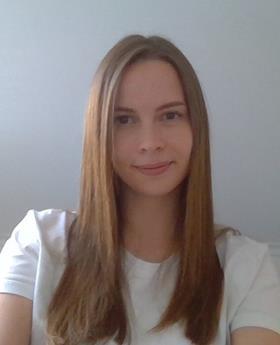A group of scientists in Ghent developed a material for breast reconstruction and are founding up a spin-off to bring their invention to patients. ‘The biggest challenge is everything you can’t control.’
Good breast reconstruction is not self-evident. Each of the available methods has obvious disadvantages. For example, silicone breast implants are available, but they need to be replaced every 10 to 15 years. There are also growing concerns about the safety of these implants. A second option is the microsurgical free flap, which is a very complicated, invasive technique that causes additional scarring. Finally, there is lipofilling, which uses the body’s own fat tissue for reconstruction.
Injectable

Lipofilling is potentially the preferred technique because it is minimally invasive and uses the body’s own regenerative powers. Unfortunately, this technique is not yet optimised. Many injected cells die and the final result remains uncertain. Lana Van Damme, a PhD student at Ghent University, is trying to improve the survival rate of these cells. She developed a gel that supports the transplanted cells. Eventually, the body must degrade the gel, leaving no foreign material in the patient. Starting with a basic polymer, she developed an injectable system with the right physical and mechanical properties. The final material showed the desired effect when tested in mice. ‘We got the results we wanted, both in vitro and in vivo. That was the turning point.’
Investors

With these results on the table, An Van Den Bulcke set to work on patenting. She has a polymer chemistry and business background and is now involved in fundraising. ‘The patent was a milestone in our development process. Once we had it, we could apply for funding within the university.’ But if you want to use your product in humans, you have to go through an extensive testing process with accredited companies. As this is expensive and impossible to do in a university setting, the research group founded a spin-off called 4Tissue. Van Den Bulcke focusses on raising external funding for this trajectory. They need €5-7 million for the first round of funding. ‘I have meetings with investors almost every day, which is very time-consuming. Right now we are still at the university, but we will move once we secure funding.’ The first human trial is due to take place in 2024. Alongside the testing trajectory, the team is developing a 3D printed version of their product.
The current team consists of six people, all of whom have a scientific background, and two professors in an advisory role; Phillip Blondeel and Sandra Van Vlierberghe. Lise De Moor is the regulatory specialist for medical devices. ‘Before you are allowed to test on humans, you have to assess all sorts of things,’ explains De Moor. ‘Is the material biocompatible? Does it meet sterility requirements? Is it product stable?’ Also involved are Chris Vercruysse, who is responsible for chemical synthesis and coordinating production, and plastic surgeon Bernard Depypere, who will evaluate the gel clinically. Kaat Van Dorpe has an industrial background in clinical trials and has been recruited as operations manager.
Medical need

Van Damme, Van Den Bulcke and De Moor are driven by the desire to get their product to patients. ‘As a researcher, you always hope, somewhat naively, that you can make a difference,’ says Van Damme. ‘The chance of that becoming a reality increases my motivation.’ De Moor appreciates the contrast with her own PhD. ‘That was very fundamental and not at all close to an application. It is really interesting that this fundamental research has led to a potential application that actually meets a medical need.’ This desire to deliver their product directly to the clinic is where the challenge lies. Sandra Van Vlierberghe is also involved in the start-up company BIO INX (see also C2W | Mens & Molecule No 4, 2022). This company will not develop products for patients itself, but will offer biomaterials to research institutes. ‘Our IP is in resorbable materials,’ says Van Den Bulcke. ‘We focus on clinical validation of our biomaterials in specific applications. For that, you need to raise bigger budgets.’
Although few start-ups reach the finish line and become profitable, Van Damme has great confidence in her invention and the team. ‘The fact that we have come this far gives me confidence in the product and in the team,’ she says. ‘We have seen good results in tests with human cells and we have always been able to solve the problems we have encountered so far. There are things we cannot predict, but the team is strong enough to find solutions.’ Van Den Bulcke adds: ’Believing in it is the first step. The biggest challenge is timing and investors, everything you can’t control.’


















Nog geen opmerkingen